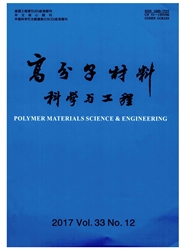

 中文摘要:
中文摘要:
将数字散斑相关计算与压痕硬度测试相结合,探讨在洛氏硬度计上测试高分子材料的蠕变性。首先使用CCD连续采集压头移动图像,然后进行散斑计算,根据计算结果绘制出压头位移-时间曲线,据此建立压入深度与时间、材料的蠕变与时间以及应力与时间之间的关系式,最后通过线性拟舍得到被测材料的蠕变指数。通过对高密度尼龙、有机玻璃及环氧树脂的试验证实,该方法是可行的,试验得到三种材料的蠕变指数分别为0.12、0.012、0.07。试验中还发现,根据深度计算的硬度值与通过表盘读出的硬度值是不同的,在比较不同高分子材料的硬度时,前者比后者更合理。
 英文摘要:
英文摘要:
This paper presented an indentation testing method based on the technology of digital collection and figure speckle correlation. By using the Rockwell hardness apparatus the macromoleeule creep was measured with different load and sphere radius. The indenter moving image was collected continuously by CCD. Correlation calculation is performed according to these images and then we can get the indenter displacement-time curve, and the stree-strain curve creep-time curve. The acquired experiment data are fitted with a suitable function in order to calculate irreversible deformation. The creep exponent of the material was obtained by fitting with a linearity function. The method is validated by testing nylon, polymethyl methacrylate, epoxy resin. This study also finds that the calculation hardness is more reasonable than the measured value. When different material hardness is compared, we can find the former is more suitable.
 同期刊论文项目
同期刊论文项目
 同项目期刊论文
同项目期刊论文
 期刊信息
期刊信息
